THE GODFATHER (1972)
The first instalment of Francis Ford Coppola’s epic trilogy charts the rise to power of Michael Corleone, scion of a Mafia family.
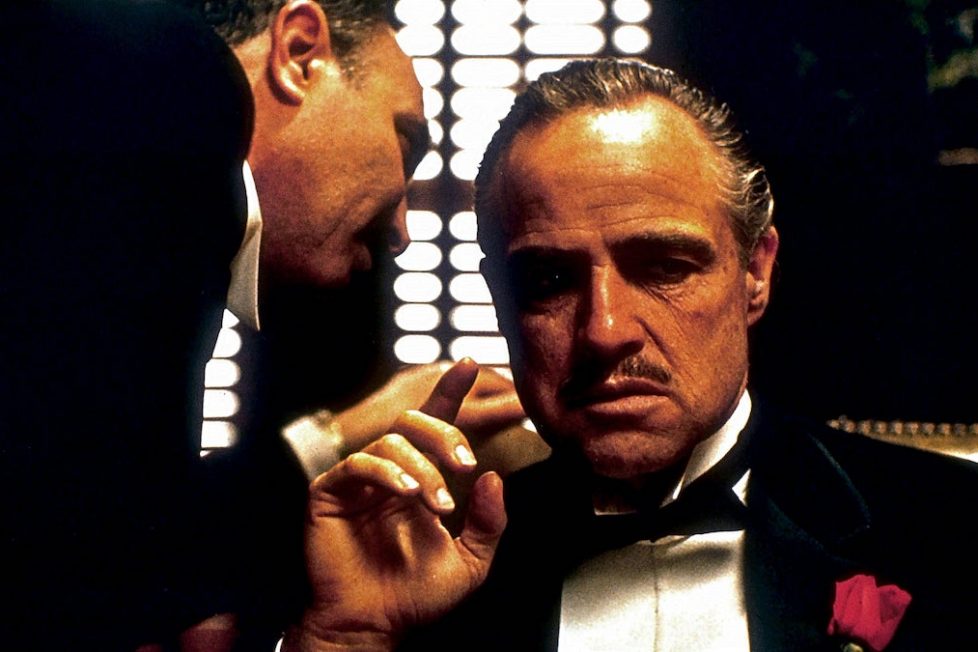
The first instalment of Francis Ford Coppola’s epic trilogy charts the rise to power of Michael Corleone, scion of a Mafia family.


The beginning of The Godfather isn’t really the beginning of its story, for as soon as the undertaker Bonasera (Salvatore Corsitto) starts describing his problems with his daughter, we have the feeling we’ve entered a complete world which already has a long history behind it; and as the camera slowly pulls away from Bonasera and over the desk in front of which he sits, so the audience is pulled further and further in.
Eventually, the screen reveals the man to whom Bonasera is making his entreaties: Vito Corleone (Marlon Brando). But this six-minute scene reveals much of the flavour of Francis Ford Coppola’s masterpiece—cynical but romantic, epic but intimate and even understated, concerned with immense and violent power wielded in conservative domestic settings—and, of course, one of its central themes too. Bonasera is eager to emphasise that he acts like a “good American”, and sees nothing un-American in seeking the help of Vito, the Godfather himself.
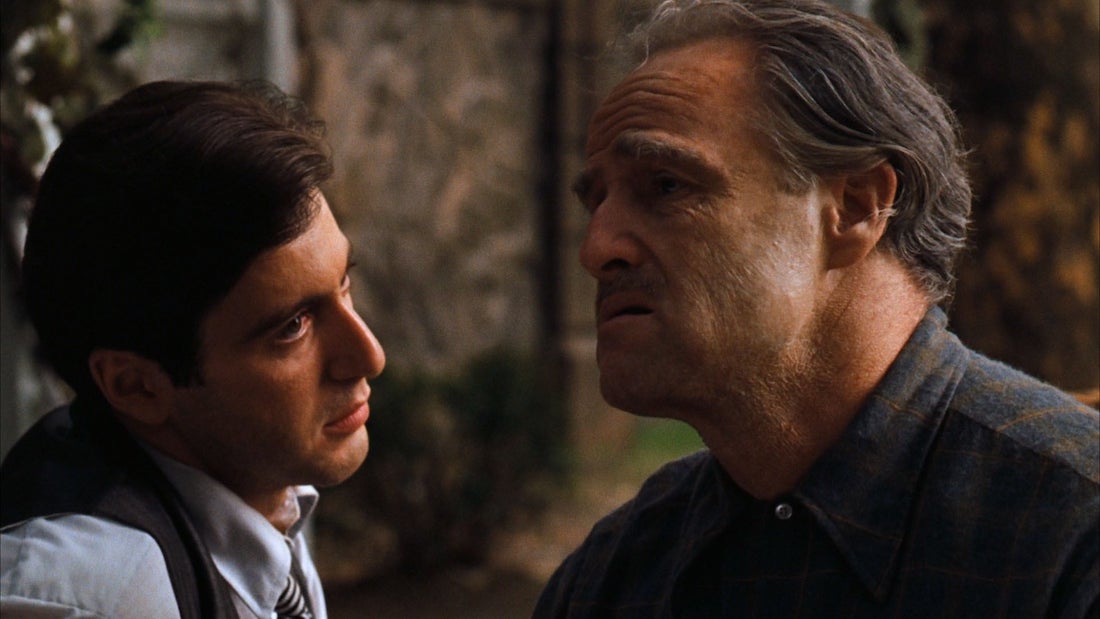
If the beginning is not the beginning, nor is the end the end, because for all that Coppola has said “if I had had my way, there would only be one Godfather”, this is a movie that exists in an extraordinarily close relationship with the first of its two sequels, The Godfather Part II (1974). “Sequel” is a weak word; the second film is the culmination of the first and it’s what makes full sense of the first, confirming the heart of the story lies not with Vito, or with his impetuous heir apparent Sonny (James Caan), but with Michael (Al Pacino), an amiable but almost marginal figure at the beginning of The Godfather whose descent into amorality, rise to power, and loss of love are only fully completed in Part II.
The second film, itself unusual for mainstream Hollywood product in giving almost equal play to two parallel stories separated by decades, one preceding the first movie and the other coming after it, harkens back repeatedly to the 1972 film—perhaps most obviously with the several occasions where old men are seen sitting outside, echoing the garden death of Vito in the ’72 movie (Coppola’s favourite scene). It may well also refer directly to Bonasera’s “good American” line in a scene where a corrupt US senator sneers at the Corleone family for “trying to pass yourselves off as decent Americans.”
And if Part II seems less enclosed than the first film, if the family seems more out-in-the-world and vulnerable and Michael seems to lack the bottomless gravitas of Vito, that too is part of the bigger tale of social change taking place behind the nominal plot and beginning in the ’72 movie. Vito is old, courteous, cautious, family-oriented power, a hangover from the 19th-century; Michael is the new, heartless, ambitious technocratic power of the postwar era.
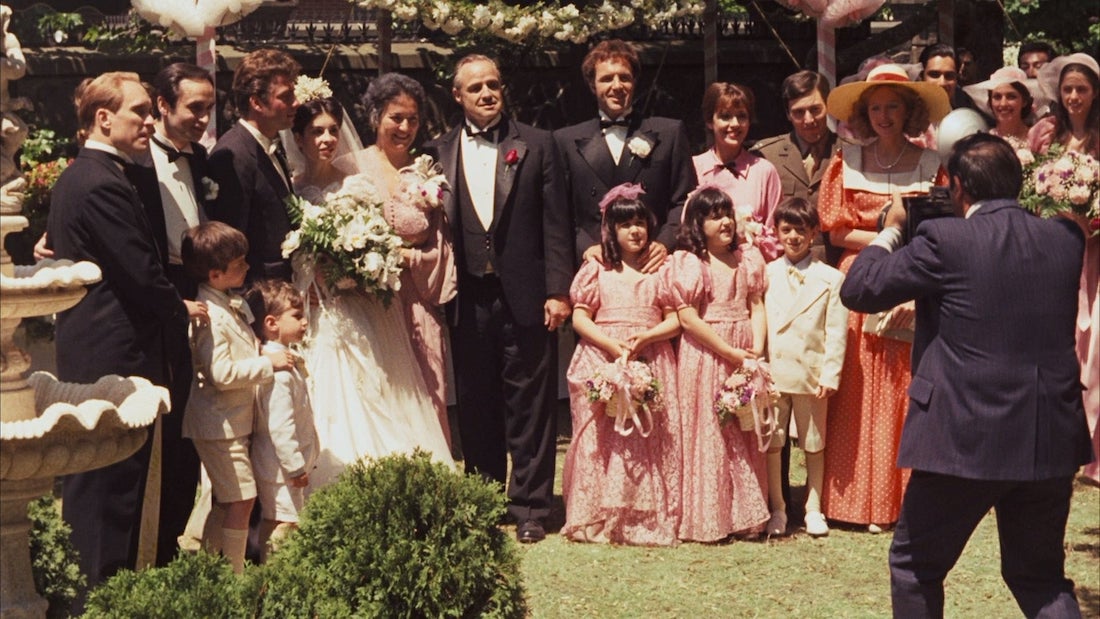
The two films should be seen as a single work, but this is only possible retrospectively. In 1972 there was just one Godfather, an adaptation of Mario Puzo’s huge bestseller and itself a runaway hit. For a while the movie held the record as all-time biggest earner, and as the film scholar Jon Lewis wrote, “the amount of money a studio could earn from a single property seemed changed forever.”
However, although today it seems to fit so perfectly into the catalogue of early-1970s successes from young directors—The French Connection (1971), The Exorcist (1972), American Graffiti (1973), Jaws (1975)—it nearly, like so many classics, didn’t happen in the form we know it. Paramount Pictures, the studio, wasn’t overly keen on many of the final cast (imagine the alternatives: Burt Reynolds in Pacino’s role, Ernest Borgnine in Brando’s…) or, as production proceeded, on Coppola. (Others considered at different points included Richard Brooks, Elia Kazan, Arthur Penn, Franklin J. Schaffner, and Costa-Gavras.)
Indeed, Coppola wasn’t an obvious choice for The Godfather. His Finian’s Rainbow (1968) had been reasonably successful both commercially and critically, but it was a musical about a leprechaun, while The Rain People (1969), described by the director as “a labour of love”, was a low-key, low-budget, arthouse flick. Perhaps the screenplay he co-wrote for Schaffner’s Patton (1970) provided the most obvious training for adapting Puzo’s novel, with its 1940s setting, its male milieu, and its central character who leads by fear, old-fashioned, proud and intolerant of weakness.
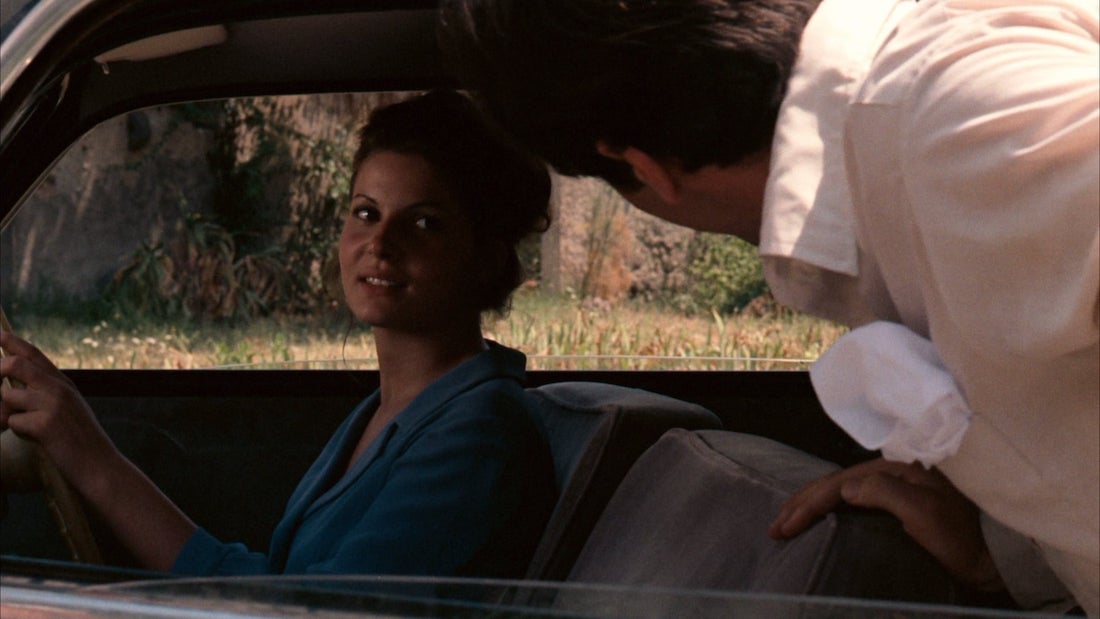
The Godfather begins in 1945 with the wedding of Vito’s daughter Connie (Talia Shire), one of two rites-of-passage which bookend the film and underline the importance of family; the other is the baptism of Connie’s baby, famously intercut with scene after scene of gangland killings, and again they are referenced in Part II with a major revelation at a New Year’s Eve Party. Indeed, the Mafia was renamed in the script as “the Five Families” after protests from the Italian-American community, and nominally The Godfather is the story of power struggles among these families as well as the succession within the Corleone family itself after Vito is injured.
But although it has the subject matter of a crime film, stylistically it ‘s completely unlike previous gangster movies and owes more to the epics that concentrated on the experiences of individuals during historic events: Lawrence of Arabia (1962), or even Gone With the Wind (1939). (The Godfather originally had an intermission, too, just like those films.)
Criminal activity itself is a given in Coppola’s movie, but not a particularly important one—just part of the background—and law enforcement, indeed non-criminal people in general, are virtually irrelevant. The FBI agents writing down licence plate numbers at the opening wedding party are mere irritants, like wasps at a picnic. (In Part II, a police siren heard during a garrotting has nothing to do the murder, though it would in most movies; it’s not something to care about.)
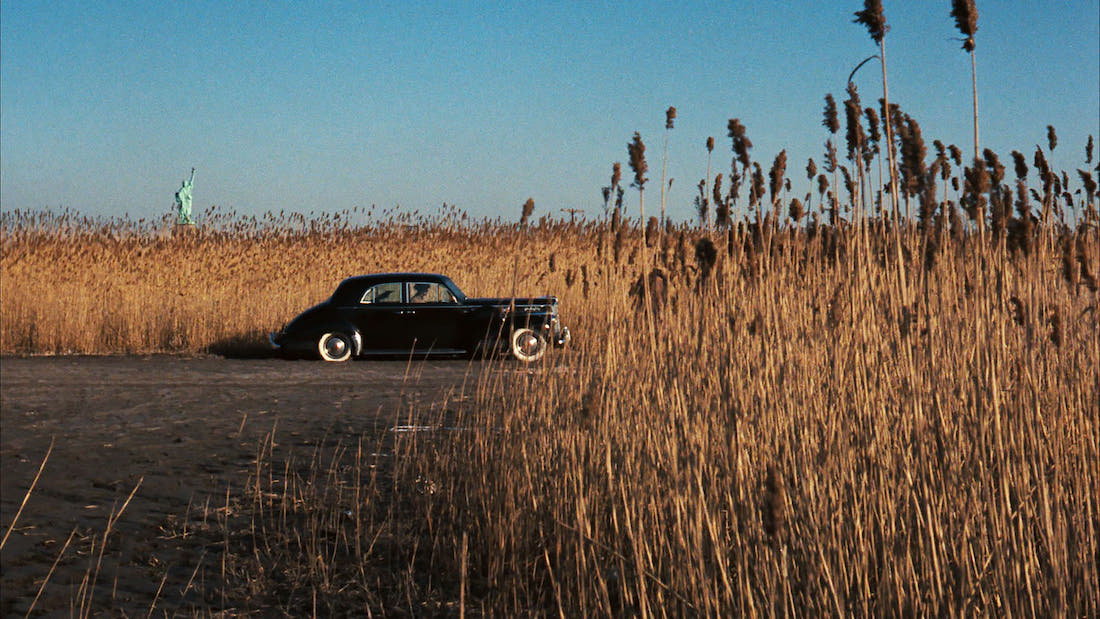
It moves slowly, for the most part—the Chicago critic Dave Kehr described it as “alternating between stasis and explosion”—but always forward and without pause. There’s no release; each resolution just sets up a new problem for someone. Everything from the beginning is significant; the undertaker Bonasera will reappear much later to illustrate how seriously the community takes obligations owed, the apparently indulgent 25-minute wedding sequence is an opportunity to set up most of the key characters, the famous horse’s head in a man’s bed is not there just for shock value but to indicate the inexorable reach of the Corleones. The calculated misdirection before the brutal, Bonnie and Clyde-recalling assassination scene at a tollbooth is brilliant, but nothing about it seems contrived.
And yet there’s always a naturalness to The Godfather, a sense of real plausibility, in part because all the characters remain slightly ambiguous. In one masterful scene, for example, the family lawyer Tom Hagen (Robert Duvall) is trying to persuade Sonny not to take business personally, yet by the end of the scene it’s Sonny lecturing Hagen on the same thing. There’s no dramatic moment where their roles reverse; it just happens, as it might in any conversation on a difficult problem. And there is at least a little humour too, perhaps surprisingly. When Michael is wooing Apollonia (Simonetta Stefanelli) on a walk in Sicily, she slips, he reaches out to grab her—and a gaggle of chaperones comes into view.
Much of The Godfather has become almost folkloric: the horse’s-head scene, the “sleeps with the fishes” and “offer he can’t refuse” lines, the musical motifs by Nino Rota that give it (and Part II) such unity. Visually, too, it’s unforgettable, much of it enclosed in a chocolatey murk of hidden powers and machinations, contrasted with bright exteriors. Gordon Willis—Coppola’s cinematographer on all three Godfather movies—was nicknamed ‘the Prince of Darkness’, and the variations he rings on it are significant; in The Godfather the gloom is that of the Corleones’ tradition, privateness, lack of ostentation (Vera Dika has compared it to Rembrandt), but in Part II it’s the darkness of evil.
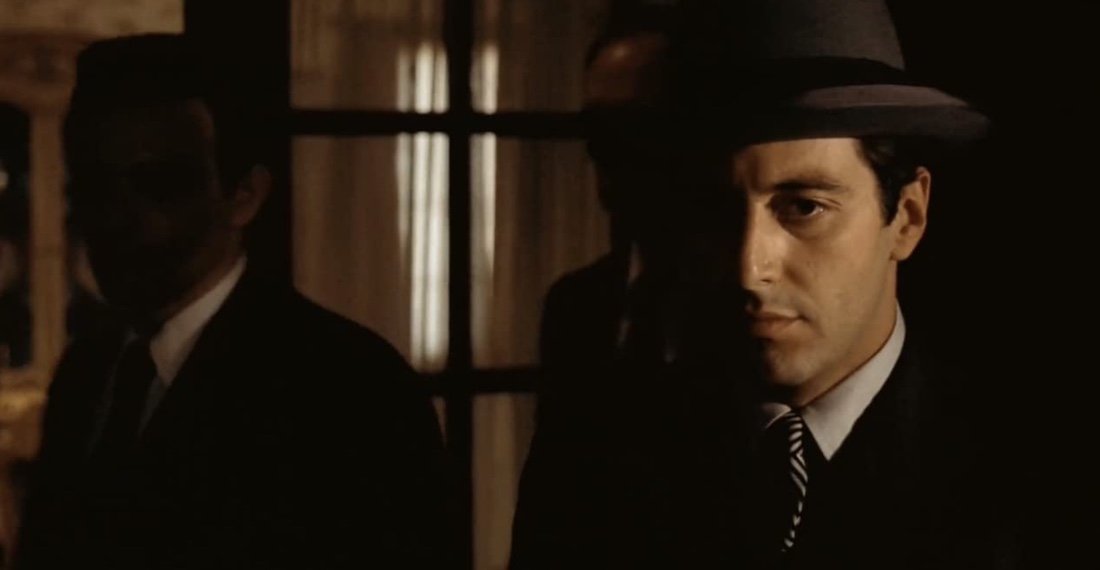
Just like the family’s, Willis’s and Coppola’s visual style is unpretentious, letting things unfold in front of the camera rather than making it part of the story. The pace is casual; at 8.1 seconds, the average shot length is about double that of contemporaneous action movies. There are relatively few close-ups (and when they appear they are often chiaroscuro), no fancy zooms or overhead shots, few establishing long shots in the mostly New York locations (we never really see the whole of Vito’s mansion).
The moment where Carlo (Gianni Russo) lies unconscious from a beating beneath a spurting fire hydrant is a rare case of a shot being obviously set up for dramatic effect, and for the most part the cinematography stands back to give the actors and their world maximum space. As Pauline Kael wrote, “Coppola’s approach is openhanded: he doesn’t force the situations. He puts the material up there, and we read the screen for ourselves.”
This lack of constriction allows The Godfather’s uniformly outstanding cast to create characters of exceptional subtlety—every one of the ensemble, you feel, could easily sustain a film of their own.
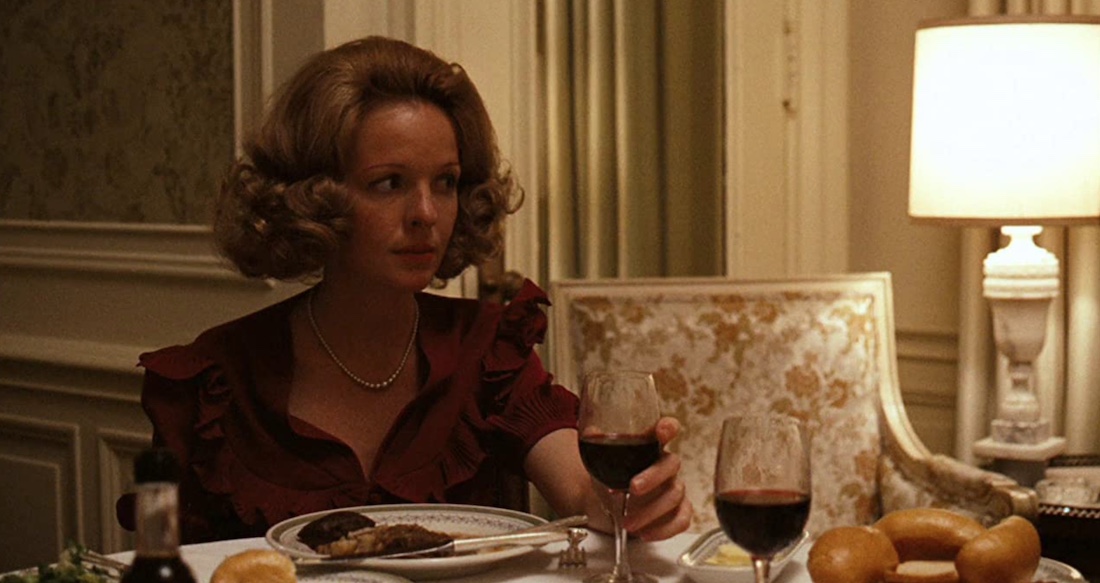
Brando’s Vito is the one that has entered legend, a lumbering, jowly man with a hoarse voice and an offhand manner that nevertheless suggests deep thought and rich experience. But Pacino’s Michael is the one with the steepest arc, initially seeking to distance himself from the rest of the Corleones (“that’s my family, Kay, it’s not me,” he tells his girlfriend Diane Keaton at the opening wedding), then becoming a reluctant participant in violence (rather like Marcello in Bertolucci’s 1970 The Conformist, a film Coppola admired), eventually lying to Kay and literally closing the door on her, at last putting the family first.
Caan’s Sonny, a hot-headed man as different from his brother Michael as can be, has his brief moment in the sun; but more intriguing because he’s less prominent and seemingly weaker than his siblings is the terrific John Cazale as the other son, Fredo, who takes on greater importance in Part II. Perhaps most fascinating of all, however, is Duvall’s Hagen—fascinating because he’s not one of the family and yet is so close to them (sitting in the front row at Vito’s funeral), allowing us to identify with him at the same time as we wonder exactly what his perspective and motivations are.
John Marley as Woltz, the unfortunate recipient of the horse’s head, and Richard Castellano as Clemenza, a senior member of the Corleone organisation, are just two of the many minor characters who also bring The Godfather alive. The women are almost completely sidelined by comparison, especially Morgana King as Vito’s wife, in another of the contradictions which simmer beneath the surface of The Godfather: this family which venerates its women has little time for them, in this crime film with scant interest in crime, examining American capitalist values through Sicilian culture.
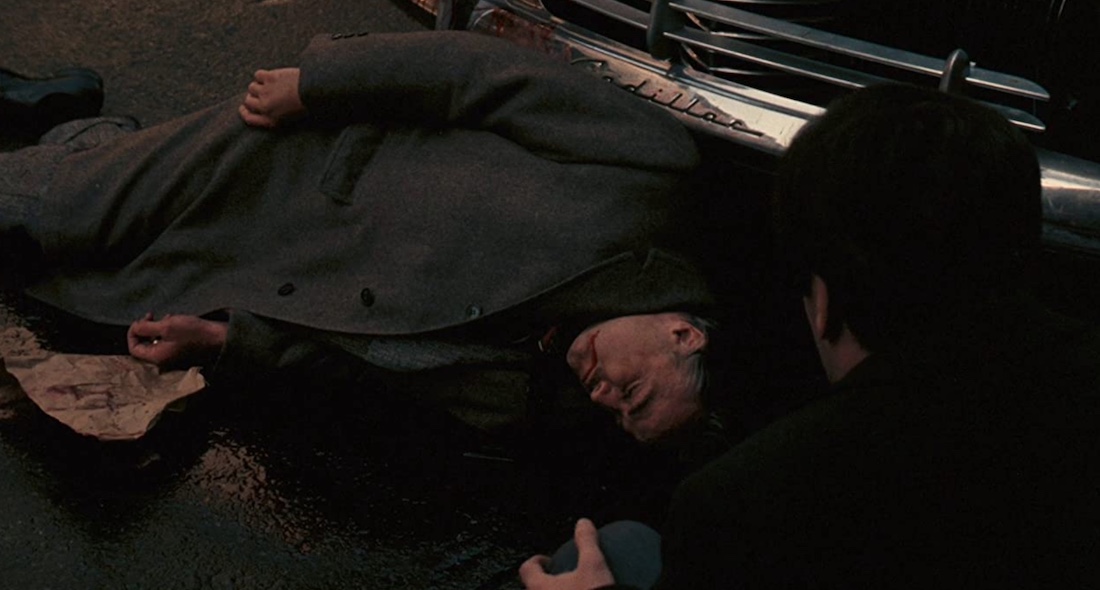
Crime, family, capitalism, Americanism: perhaps those are the concerns underpinning The Godfather, but above all it’s—in Kael’s words—“the greatest gangster picture ever made.” Don Corleone himself “loomed over every later gangster film”, as David Bordwell wrote, and the influence is plain to see in everything from the work of Scorsese, to Britcrime, to (perhaps most of all) The Sopranos, almost a reimagining of The Godfather in many ways. Of the sequels, Part II is usually (though not quite universally) regarded as by far the better and perhaps even as superior to the original: “an epic vision of the corruption of America”, according to Kael, with Jews, WASPs, Sicilians and Cubans uniting in crime. Part III is much more divisive, and a fourth film considered around 1999 never got off the ground.
The 1972 movie’s commercial success was paralleled by critical plaudits, and it won Oscars for best picture and best adapted screenplay; Brando also won but declined his award in order to highlight the unacceptable portrayals of Native Americans on the screen. (Pacino refused to attend the ceremony, as well, though for other reasons; protest was in the air in those days. But The Godfather made him a star anyway.) Inevitably there was criticism it glorified gangsters, though it really doesn’t—perhaps it normalises them but there’s no impression given in The Godfather that the Corleones are admirable people, and the violence can be disturbing, the mood of fear even more so.
Reams have been written about it, whole books and countless articles. Few would disagree that it was one of the most important, and also finest, films of an era notable for its flowering of adventurous new talent. But there is, of course, the danger that a work can be over-revered and over-analysed, that in marvelling at the scale of its influence and the many layers of its meaning we forget the basic values of a good story well told in a credible world with believable characters. As Al Pacino said: “it’s the kind of movie when you start watching it, you keep watching it.”
USA | 1972 | 175 MINUTES | 1.85:1 | COLOUR | ENGLISH • SICILIAN
director: Francis Ford Coppola.
writers: Mario Puzo & Francis Ford Coppola (based on the novel by Mario Puzo).
starring: Marlon Brando, Al Pacino, James Caan, Robert Duvall, Diane Keaton, John Cazale, Sterling Hayden, Talia Shire & Richard S. Castellano.
